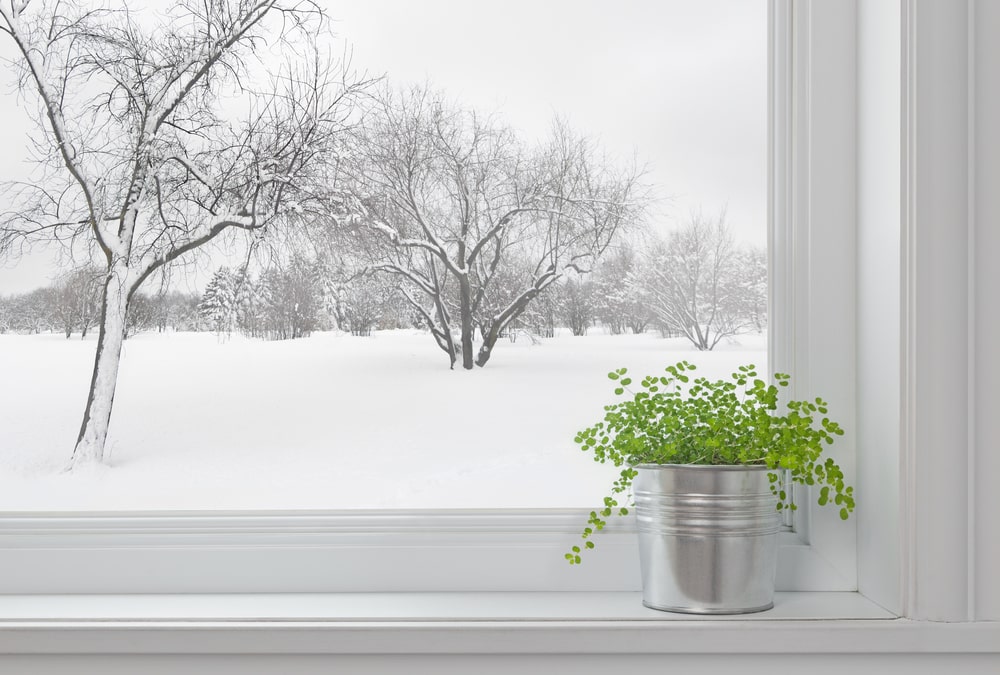To repot or not repot?
Unless you broke the pot bringing your plant in, don’t repot right now. Even indoor plants are responding to the less intense light levels and shorter days this time of year. While they aren’t dormant, they are not growing very fast. Save repotting for late winter/early spring (February/March). Remember, when you do repot, don’t go up more than an inch or so in size.
Light
You may notice a few yellowing leaves. This is particularly common in ficus trees. It should abate after a week or two. If it does not, then it is likely the plant is asking you to turn up the light. Remember, bringing a plant inside definitely provides some light challenges. Ceilings mean there is NO direct overhead light at all now and windows have challenges from things like blinds and shade. Don’t just open your blinds—RAISE your blinds.
When you open your blinds, you’re only getting direct sun for the brief amount of time the sun is in alignment with your blinds. Raising your blinds can double your light levels.
Watering
Watering needs change dramatically when you bring plants in. Gone is the cool fresh moist air, replaced by air which is nothing but dry, dry, dry. You may find your plants dry out much quicker or, if in much lower light, much slower. Check the soil with your finger to find out how dry or moist it really is before watering.
Some plants really benefit from a light misting every day—ferns, palms, citrus, orchids, etc. Remember, misting means “fogging” your plant—not “raining” on it. I place my mister on a fine spray and mist the air over and around the plant. I do not spray a hard spray directly on the foliage so water drips off—that’s “raining.” We’re not trying to water our plant this way; we’re simply trying to up the humidity level.
Feeding and Pruning
We do not recommend feeding your plants this time of year. With less intense light and shorter day length, they are NOT actively growing now. And, unless you have a stray branch that’s whacking you in the face, when you walk by, avoid pruning now, too.
Insect Issues
Examine your plants occasionally to make sure that you don’t develop an insect problem. So many outside pests are kept under control by natural predators during summer. Indoors for winter, however, these insects can hatch in the warm indoor air and, without ladybugs or other good guy predators, become a problem. Catching them early is the best defense.
Check the backs of leaves for what looks like bits of white cotton fuzz (mealybugs) or little brown “bumps” that you can flake off with your finger (scale). Check the newest growth for yellow, white or green bugs (aphids). If you see a clear sticky liquid on the foliage or the table around the plant, that is another indication you have a sucking insect. This sticky liquid is “honeydew”, a secretion they produce.
If you notice insects that fly off when you jostle the foliage, you may have an insect pest called whitefly. If you notice gnats flying around, particularly around the pot, they might be fungus gnats. If possible, bring a sample of the plant or insect in for us to identify and direct you to the correct product.
By the way, if you, like me, decorate one or two of your plants for the holidays, be sure to use battery-operated lights since electric ones may generate heat which might damage your plant.
One last thing, if you have cats, be sure to check out my blog from October 29, 2018, (Cats and Plants) for tips on how to keep your kitties safe.


What is the best way to treat the sticky white insect invading one of my orchids? I’ve already isolated it and the plant is not looking terribly unhealthy but exactly what use to rid her of this icky looking sticky stuff would help. Thanks!
Karen, if it looks like little bits of white cotton lint, then you likely have mealy bug. With an orchid, the best thing to do is to take a Q-tip, dip it in rubbing alcohol and dab it directly on the pest. Then take a damp papertowel and gently wipe off the top and bottom of the foliage (to get rid of anything you might have missed.) Check the plant again in a couple of weeks to see if anything has returned (we occasionally miss an egg or two.) You might want to repot your orchid (or bring it in and let me do it) to take care of any eggs that may have dropped into the potting medium.